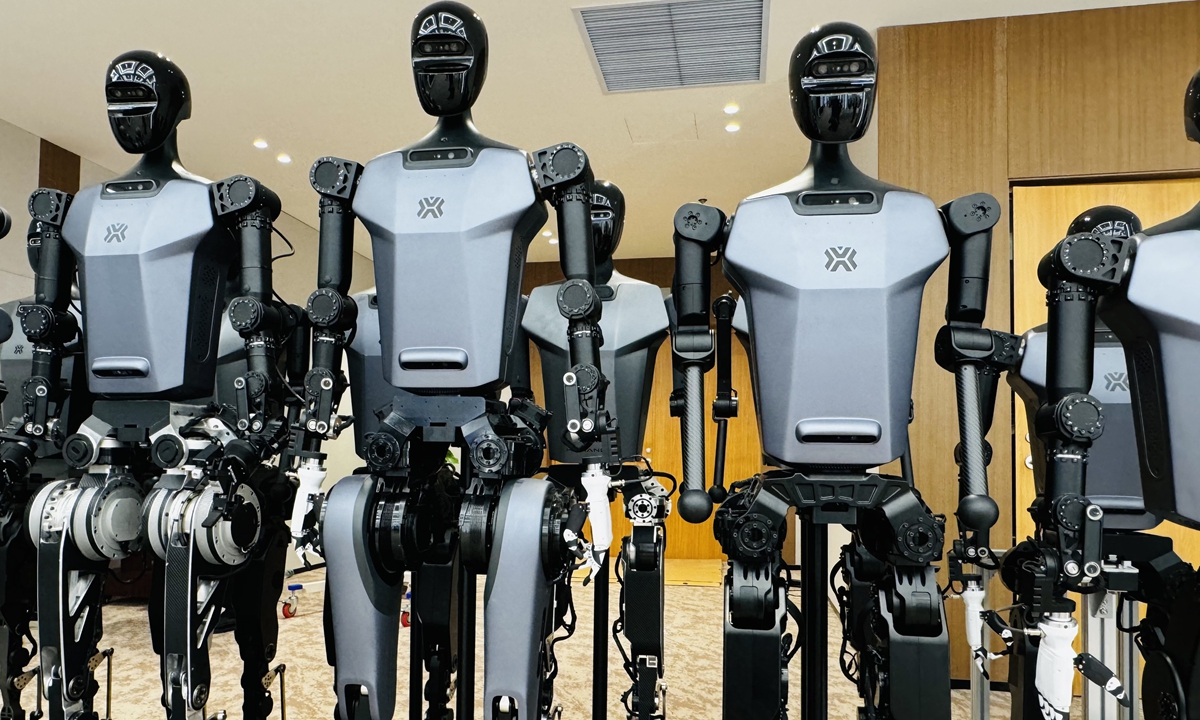
Tiangong, the humanoid robot described as the world's first full-sized humanoid robot capable of running solely on electric drive, is on display at the Beijing-based China's National and Local Co-built Embodied Artificial Intelligence Robotics Innovation Center on November 11, 2024. Photo: Liu Caiyu/GT
The world's first electric running humanoid robot "Tiangong" went open source on Monday, a move that is expected to facilitate secondary development of humanoid robots and accelerate robots' integration into human life.
Developed by Beijing-based National and Local Co-built Embodied AI Robotics Innovation Center, Tiangong is claimed to be the first full-sized humanoid robot driven purely by electric power.
Using "Tiangong" as a foundational platform will advance secondary development in embodied robotics and exploration in various cutting-edge areas like body mechanics and embodied intelligence, Xiong Youjun, the general manager of the center, told the Global Times.
"The 'Tiangong' mother platform has undergone extensive testing and validation. After being open-sourced, other enterprises and research institutions can directly use it, which shortens the industry's development cycle and reduces research and development costs, the Global Times learnt from Liu Yizhang, a manager responsible for Tiangong from the center.
The open-source project covers two versions of the humanoid robot - "Tiangong 1.0 LITE" and "Tiangong Pro," with software development and structural design documents already available to researchers and collaborators, Liu said
By the end of the year, the center plans to release additional open-source structural blueprints, software architecture, and electrical systems, according to Liu.
"Tiangong" has an average speed of 10 kilometers per hour and a maximum running speed of 12 kilometers per hour, leading in its category. It can move smoothly across diverse terrains such as slopes, stairs, grass, gravel, and sand.
Some representatives from Peking University, Huazhong University of Science and Technology, UBTECH, and Jianghan University said that they believe the open-source project could drive development across the humanoid robotics supply chain. Liu explained that many core components are independently developed by companies, but performance standards remain inconsistent. Open sourcing the robot will allow development on a unified platform.
Since its official release in April 2024, Tiangong has already been applied in multiple scenarios, including warehouse pick-and-place tasks and patrols for electrical plants, the Global Times learnt.
The industry has been identified by the Ministry of Industry and Information Technology as a new frontier for technological competition and a key driver of economic growth.
Previously, the Shanghai-based National Local Joint Humanoid Robot Innovation Center also unveiled its open-source general-purpose humanoid robot Qinglong. Qinglong stands at 185 cm tall and weighs 80 kg, according to the company.




